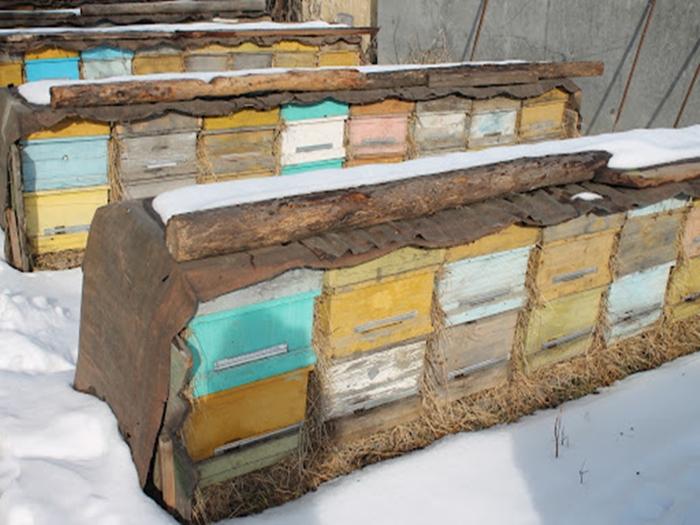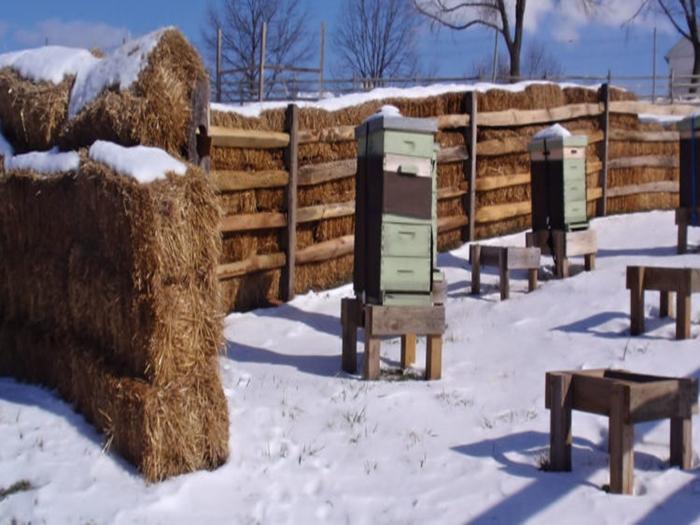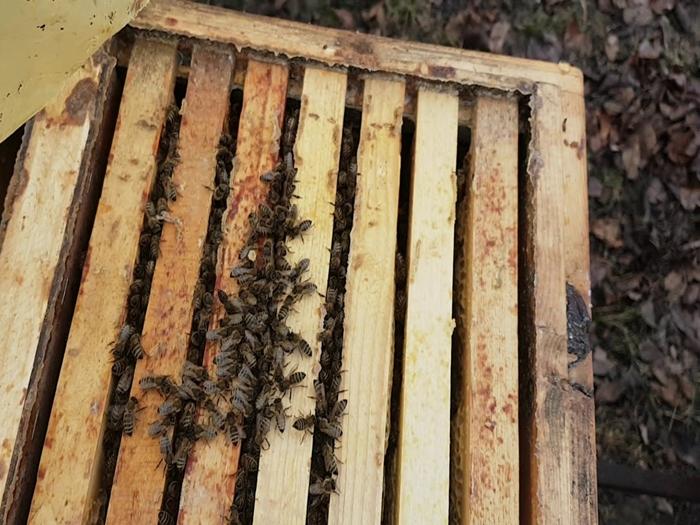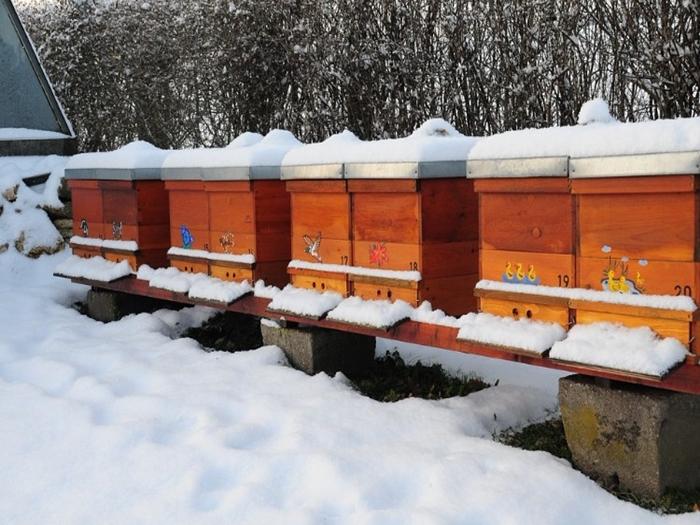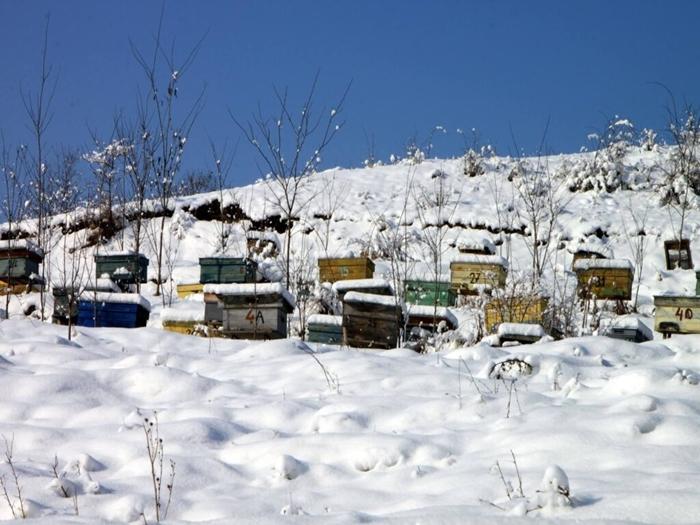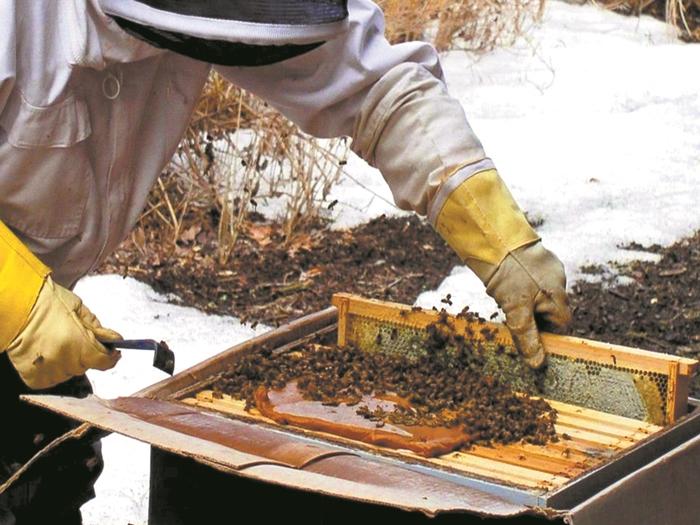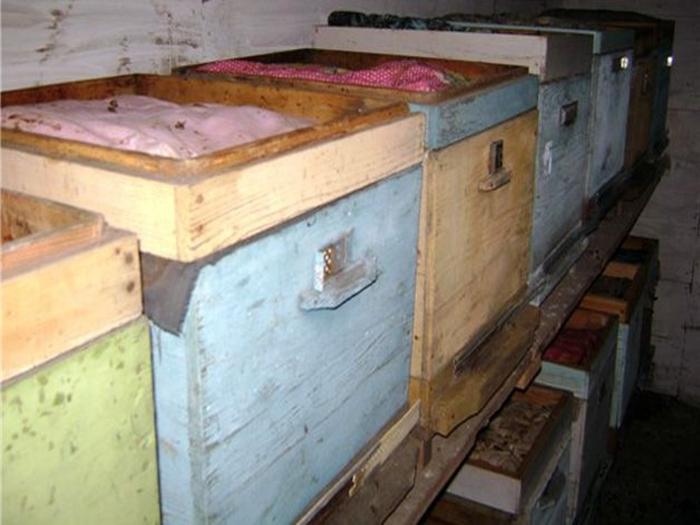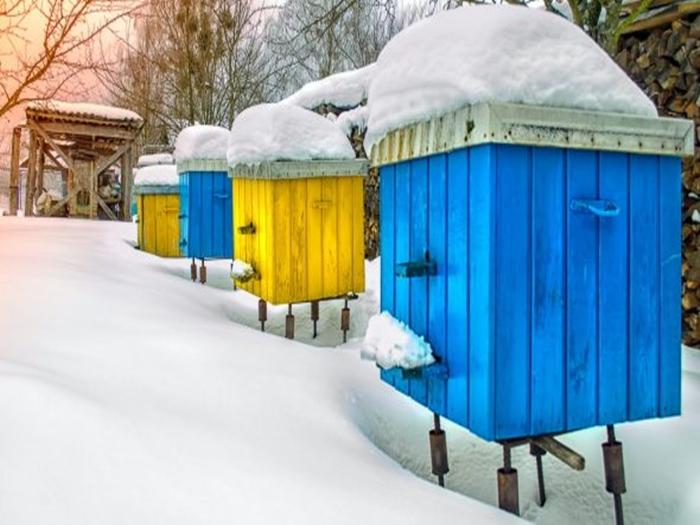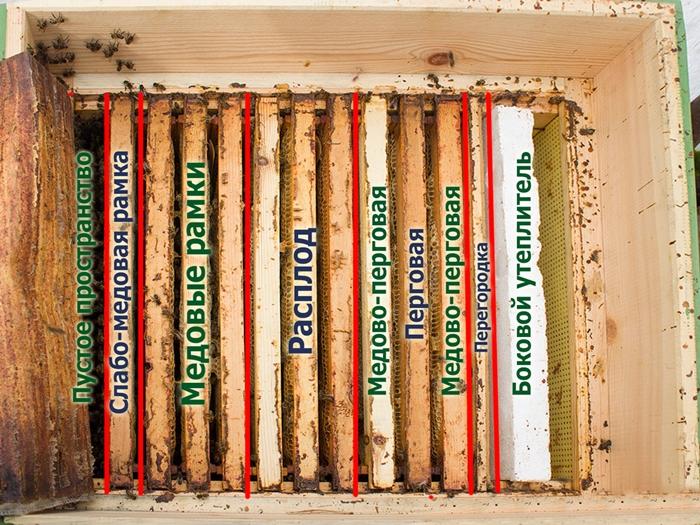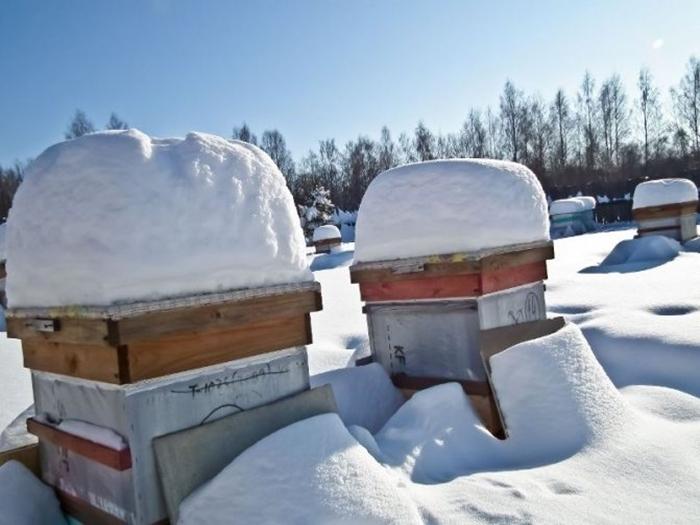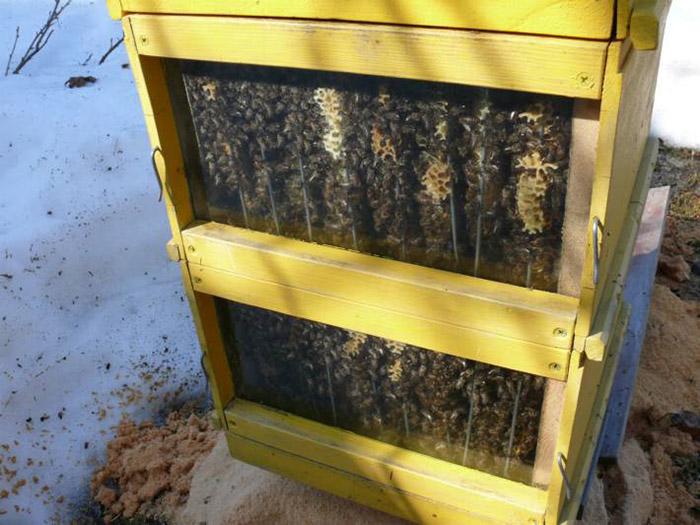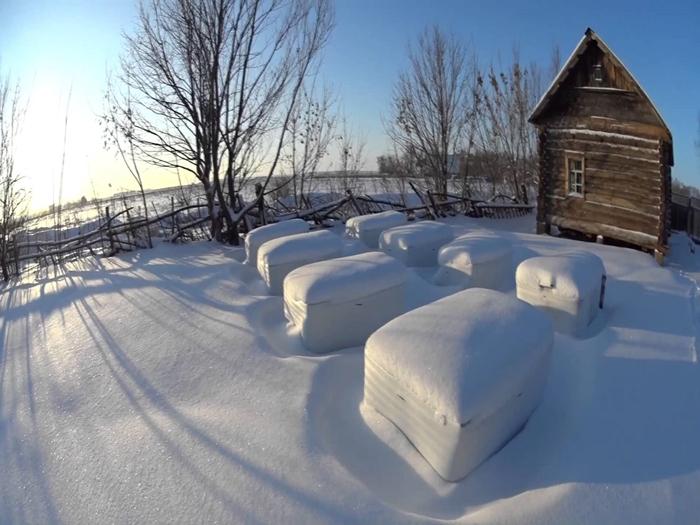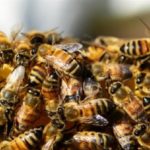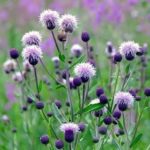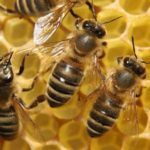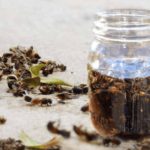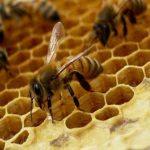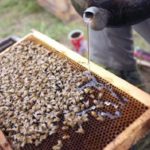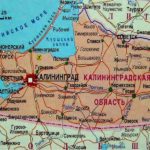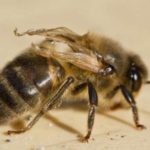Winter is a fairly important and responsible stage in beekeeping. If you do not properly prepare for wintering bees, you can suffer serious losses. However, many novice beekeepers make serious mistakes when caring for these insects. In order for the winter to pass easily and not end with the loss of bee colonies, it is important to properly insulate the hives and take care of quality nutrition.
How bees prepare for winter
Honey bees do not sleep in winter and do not go anywhere. During this period they live a completely normal life.With the arrival of autumn cold weather, the queen stops laying eggs. In this case, insects spend most of their time in their own nest. There they maintain a high temperature and sit almost motionless.
With the onset of autumn, bees form a ball near empty honeycombs. If a warm sunny day arrives, it disintegrates and the insects fly out for a short walk. It is needed to cleanse the intestines of insects. This makes their wintering much easier. After this procedure, the individuals return to the hive.
What do bees do in winter?
A long evolutionary process has allowed bees to develop resistance to the climatic conditions of a particular area. This enables local breeds to successfully withstand the winter. Therefore, at the stage of preparing bee colonies for wintering, it is worth taking into account their characteristic features.
Thus, bees of the Karnika breed can easily withstand severe frosts and winds. During wintering they form small groups. Carpathian bees need to be united before winter.
In the apiary
In winter, domestic bees live outside, in insulated rooms or in alder forests. During this period they do not hibernate. However, it is not recommended to disturb insects. Bees become especially sensitive closer to spring. It is important to consider that insects do not sleep in the hive. Therefore, even a slight impact on them can provoke a flyby and lead to the death of the entire family.
Experienced beekeepers leave insects outside. This allows you to get healthy individuals the next year that begin flying early. However, in this case it is important to take into account the climate of the region. In the south there is no special need for insulation. In the northern regions, hives require high-quality insulation.
To do this, the inside of the houses is sheathed with special materials - plastic, polystyrene foam, foil.
Cotton or linen is used to insulate the lids. In this case, you cannot use padding polyester. Insects can become entangled in it, which will lead to their death.
It is recommended to store hives on the south side of buildings. They are placed closer to each other. In this case, you should retreat 10-20 centimeters from the wall. It is recommended to remove the lower honeycombs to optimize living space.
In beekeeping, protecting the apiary from strong winds is of great importance. To do this, the hives should be fenced with slate or roofing felt. It is recommended to cover the entrances with shields. It is also important to ensure that snow does not drift inside.
To prevent the accumulation of condensation and mold in the lower part of the house, it is worth making 2-3 holes for ventilation. When wintering bees outside, it is important to take into account that feed costs increase by several kilograms.
In nature
The length of the nest reaches several meters. Insects overwinter in the upper part, which is well insulated. At the same time, they do not fall asleep for the winter. The functions of the ventilation hole are performed by the tap hole, which is located below. To store feed, the cells are sealed.
Basic methods of winter maintenance
Bees can winter in different ways. In this case, a number of features should be taken into account.
Wintering bees in the wild
In the southern regions, bees spend the winter right in the apiary. In this case, the hives do not need to be brought indoors. Proponents of this type of wintering believe that a strong bee colony will be able to withstand the winter outside, and this will benefit it. Such individuals swarm less and are more productive.
The flyby takes place on the first sunny day a month before the standard dates. Thanks to the cleansing of feces, the bees begin to actively raise brood. As a result, by the time of a regular exhibition from the winter hut, the nests include 4-5 frames with brood. 2-3 kilograms of honey are spent on feeding it, which is absorbed in the wild.
To implement this method you need to do the following:
- Insulate the nest, place a store on the ceiling, put pillows and dry moss in it. The hives should be placed on boxes 30-40 centimeters high. They should be filled with moss and dry leaves. The upper entrance should be kept open to allow air flow.
- Provide insects with quality food.
- Have many young individuals.
- Eliminate factors that may cause insect disturbance.
In a snowy winter, it is recommended to rake up snow and sprinkle it on the hives from the back and sides up to the roof. From the front side this is done to the middle. In severe frosts, the hives should be completely covered with snow. This will help reduce the energy costs of individuals to maintain heat in the hive and reduce feed consumption. If there is not enough snow, you should use roofing felt, straw, or synthetic insulation.
Wintering in a winter hut
Many beekeepers move their hives to special winter huts for the winter. They are closed, unheated rooms. This allows you to not depend on the weather, the presence of snow, temperature indicators and other factors. Typically, hives are placed in the winter hut in early November, when average temperatures drop below zero.
Stronger families are recommended to be placed on the lower racks. This should be done closer to the door.One of the hives should be placed on a scale to monitor feed consumption during wintering.
In December and January, it is recommended to visit bees a maximum of 2-3 times a month. At this time there is a period of rest. It continues until the brood appears. Insects are characterized by quiet behavior. At the same time, the monthly honey consumption per bee colony is 750-900 grams. In February, insects become more active and require constant weekly monitoring.
During the inspection, it is important to monitor the condition of the dead. This helps to identify negative signs of wintering in time, find the causes of problems and take action. At the end of February, insects need to start raising offspring, so they raise the temperature to +35 degrees and need more food.
When is feeding needed?
Bees feed on honey, powdered sugar, syrup, and protein feed. Strong families prepare their own supplies. To keep the food fresh, the cells with it are sealed. Before absorption, bees mix honey with the secretion of special glands.
On average, insects eat 18-24 kilograms of honey. This amount is enough for one bee colony. Food consumption is influenced by many factors - temperature, ventilation, humidity. The better the conditions, the less feed is required.
Possible problems
To preserve bees in winter, it is important to provide them with favorable conditions. At the same time, beekeepers often face the following problems:
- Feed shortage. In order for insects to survive the winter normally, they need to be fed properly. It is important to use food of proper quality. Light varieties of honey are most suitable for wintering - for example, linden. Dark varieties crystallize quickly, and therefore bees cannot eat such food.
- Violation of ventilation.Insufficient ventilation leads to nests becoming damp. Wet frames and mats cause the nest to cool down. This entails an increase in feed consumption.
- Development of diseases. Initially, a sick family should not go for the winter, as the situation will worsen. The most common disease is varroatosis. Infected bees are characterized by restless behavior, wear out, consume a lot of food and die.
- Weakness of families or lack of individuals. A weak bee colony will not be able to survive the winter. Only strong individuals are resistant to survival conditions. In addition, caring for young individuals is of great importance. It is important that in the fall there are at least 3 frames of brood in the hive.
Wintering of bees is considered a fairly important stage of their life. For it to be successful, it is important to provide the insects with suitable conditions and feed them correctly.

